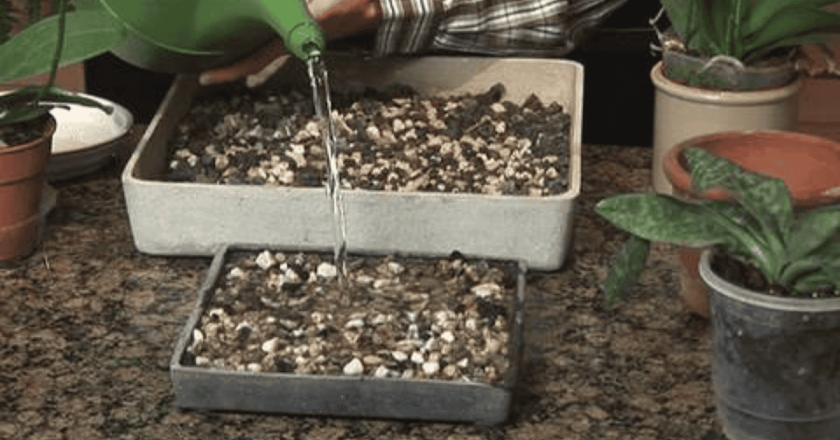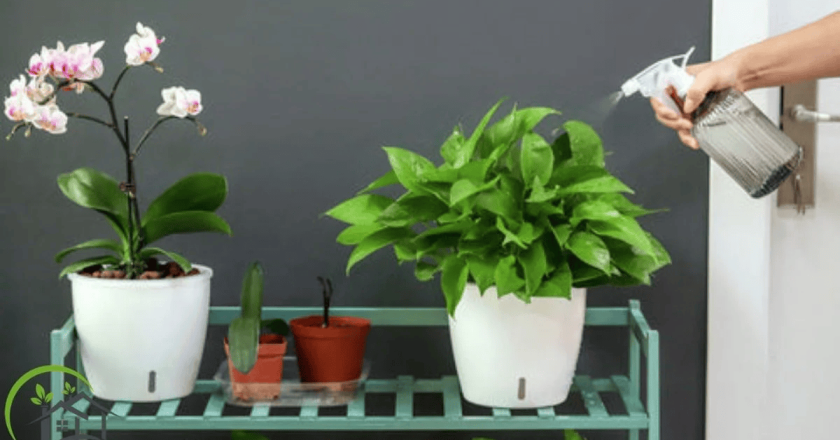When most people imagine a colorful garden, they picture spring blooms or a lively summer flower bed. But what if your garden could stay vibrant year-round? Not just two seasons of beauty, but four. That’s the idea behind a Colorful Garden for All Seasons: a space that thrives with life, even when the weather doesn’t.
It’s entirely possible. And no, you don’t need to be a professional landscaper to do it. Your yard can be a true four-season wonder with some planning, experimentation, and the right mix of garden flowers, foliage, and textures.
Let’s walk through creating a Colorful Garden for All Seasons, one step (and one season) at a time.
🌍 First Things First: Know Your Growing Zone
Before you think about planting your first seed or picking up that stunning perennial from the nursery, you’ll need to know your USDA hardiness zone. It’s not the most exciting part of gardening, but it’s essential. Why? Because climate determines what survives and thrives.
If you’re in Zone 5, you can forget about tropical plants making it through the winter. But Zone 10? You might never see frost at all.
Here’s a quick lookup guide:
| USDA Zone | Min Temperature | Example Region |
|---|---|---|
| Zone 3 | -40°F | Northern Minnesota |
| Zone 6 | -10°F | Mid-Atlantic States |
| Zone 9 | 20°F | Florida Panhandle |
| Zone 10 | 30°F | Southern California / Miami |
Still unsure? Check your USDA zone here.
🗓️ Think in Bloom Times, Not Just Pretty Colors

You want blooms in every season, not just a peak in May or June. So here’s where bloom timing comes in.
| Season | Examples of Blooms |
|---|---|
| Spring | Tulips, Daffodils, Hyacinths |
| Summer | Coneflowers, Zinnias, Daylilies |
| Fall | Asters, Chrysanthemums, Sedums |
| Winter | Witch Hazel, Hellebores, Snowdrops |
A truly Colorful Garden for All Seasons needs layers of plants that bloom at different times. You’re not just planting a flower garden but orchestrating a floral symphony. And honestly, that’s what makes it so rewarding.
🌸 Mix It Up: Annuals + Perennials = All-Season Impact
Perennials are the backbone. They return every year and establish that consistent rhythm in your flower garden. But annuals? They’re the color punch. The statement pieces. The seasonal fireworks.
Here’s how to use both:
-
Perennials: Think of plants like black-eyed Susans, Peonies, and Lavender. They grow stronger yearly; some even offer garden flower interest in their seed heads or foliage through winter.
-
Annuals: These are your fill-ins. You can choose pansies in spring, Marigolds in summer, or Ornamental Kale in late fall. They’re versatile and offer instant color while your perennials establish or rest.
Tip: Visit your local garden center once a month and just look around. What’s blooming now? That’s what you’re missing in your own yard.
Grow Plants That Offer Four Seasons of Color
Let’s be honest—most gardens look their best during a specific window. Maybe it’s spring when everything bursts open, or summer when colors peak. But imagine walking through your garden in December and still seeing something beautiful. Not bare, not dull—just… different. That’s the magic of plants that offer year-round interest.
Now, not every plant will deliver in all four seasons. Few do. But some trees and shrubs pull their weight. They bloom in spring, wear lush foliage through summer, glow with autumn color, and then—even in winter—add shape, bark texture, or berries that pop against frost.
Think paperbark maple, with its peeling cinnamon bark that looks even more dramatic in cold light. Or serviceberry starts the year with white blooms, ends with fiery fall color, and still has architectural grace when bare. You might not notice these plants at first glance, but once you do, you’ll wonder how your garden ever felt complete without them.
I planted a Sargent’s cherry three years ago. It looked modest in the first year. But by year two, the spring blossoms were breathtaking. Then came the golden fall show. And in winter, even the silhouette felt intentional. I didn’t expect to admire a tree without leaves, but here we are.
These are the plants that quietly carry your garden through its off-seasons—like a good friend who shows up when the party’s over.
Select Long-Blooming Plants

Here’s the thing about flowers: they don’t last forever. A lot of favorites—like peonies—bloom spectacularly… for about ten days. And then? Just green leaves.
That’s where long-blooming varieties come in. They’re not necessarily flashy, but they stay consistent. They keep your garden lively without needing constant attention or rotation. They’re the steady workers in your plant lineup—reliable, unfussy, and quietly generous.
Coreopsis, gaura, salvias, and some rudbeckias can bloom for weeks—sometimes even months—if you take care to deadhead them regularly. That means snipping off old flowers to encourage more to grow. A little tedious? Maybe. But oddly therapeutic too.
And the payoff? A garden that doesn’t go through long, dull stretches between “big moments.” Instead, it stays active. It breathes. It hums.
Plus, long bloomers do more than look nice. They provide ongoing nectar for pollinators, which, if you’re anything like me, you’ll find surprisingly satisfying to watch. There’s something about seeing a bee work a flower you planted with your own hands that never gets old.
Get Creative With Winter Color
Most people don’t think about winter gardening, but that’s exactly why it’s worth exploring.
Most gardens retreat in winter. And that’s fine. But it’s also a chance to let different qualities shine—like texture, structure, and subtle hues that don’t compete, but complement.
Start with evergreens, sure. They’re the obvious choice. But look beyond the traditional. Golden conifers add a warm tone to chilly days. Witch hazels surprise you with blooms in January, when you least expect them. Even dried hydrangea heads, left standing with a dusting of frost, can be hauntingly beautiful.
And don’t underestimate the power of bare branches. Some, like dogwoods, glow red or orange in winter light. Others simply offer a silhouette—an outline against the snow that feels sculptural, even contemplative.
It’s not about abundance here. Winter color is quieter, more thoughtful. But maybe that’s what makes it feel more personal, too. It asks you to look closer.
A friend once told me their favorite time to visit the garden is when “nothing’s happening”—because it forces you to notice everything that still is. I get that now.
Keep Up With Maintenance
Let’s be real: maintenance isn’t the fun part. You’d rather choose new plants than rake up old ones. But without consistent care, your garden won’t give back what you hoped for.
It doesn’t have to be overwhelming. Small habits throughout the year do more than one big overhaul.
-
Deadheading isn’t just for looks. It keeps perennials blooming longer, redirects their energy, and gives pollinators a fresh buffet.
-
Mulching each spring retains moisture, suppresses weeds, and keeps roots protected.
-
Composting in fall boosts your soil biology, making plants hardier next season.
And every few years? Divide your perennials. Not only does it keep them healthy, it also gives you more plants—a win-win.
Maintaining your garden is grounding. Even when nothing’s blooming, tending and checking in build a rhythm—a connection.
Sometimes I go out to deadhead or spread mulch, thinking it’s just a chore. But halfway through, I slow down. Notice things. A new shoot here. A ladybug was tucked beneath a leaf. And it doesn’t feel like a chore anymore.
Have a Plan for Every Season
If you want actual year-round color, you can’t wing it—at least not entirely. You need a seasonal plan—not rigid but thoughtful, like meal prepping, with blooms.
Let’s break it down:
Spring
It’s the garden’s wake-up call. Clear out debris, prune anything dead or damaged, and give perennials room to breathe. Mulch now so the beds look tidy before the wild growth begins. Start seeds indoors or sow cool-season crops if you grow edibles.
Summer
This is when things explode. Enjoy it—but stay hands-on. Fill in any gaps left by fading spring blooms. Add annuals for quick color. Keep up with watering (ideally in the morning). And yes, deadhead. Often.
Fall
It’s transition time. Plant bulbs—tulips, daffodils, crocus—while the soil’s still workable. Tidy up what’s spent, but don’t strip everything bare. Leave some seed heads for winter texture (and for the birds). Top up the compost. Maybe snap a few pictures—your future self will thank you.
Winter
Planning mode. Reflect, sketch ideas, shop for seeds. It’s also a good time for structural pruning on trees and shrubs—when branches are bare and you can see their proper form. Walk the garden, even if it’s quiet. You’ll spot things no book could teach you.
Honestly, it’s that quiet winter walk—wrapped in a coat, hands stuffed in pockets—that often inspires the best ideas for next spring.
🧠 Key Takeaways
| 💡 Tip | 🌺 Summary |
|---|---|
| Know your zone | Match plants to the climate for best survival |
| Use bloom times | Stagger bloom periods for year-round interest |
| Combine annuals and perennials | Get lasting structure + vibrant fillers |
| Don’t forget foliage | Texture and leaf color matter more than you think |
| Winter is not dead | Berries, twigs, and bark can still surprise |
| Keep a plan, but stay flexible | Gardens grow—and so will your tastes |
🏁 Final Thoughts
A Colorful Garden for All Seasons doesn’t just look good—it feels good. It lifts spirits, connects you to the outdoors, and reminds you that nature never takes a break. There’s always something happening. Always something growing—even beneath the surface.
Your garden might not be perfect. Some blooms may come early, others late. A plant you loved might not thrive, but that’s the beauty of it. You’re not just planting flowers. You’re planting time, patience, and possibilities.
So take a step back, breathe in the earthy scent of damp soil, and imagine how this space could burst into color in June… but also in January.
Also Read:
- Garden Calendar 2025: Best Times to Plant Flowers & Veggies
- 23 Blooming Indoor Plants to Brighten Your Home This Winter
- Care Tips for Christmas Cactus That Blooms Every Year
- How to Care for a Money Tree, the Luckiest Indoor Plant
- 33 Best Plants for Your Bathroom to Add a Spa-Like Feel
- Snake Plant Care Guide | Sansevieria Tips for Indoors
- Top Drought-Resistant Plants for a Low-Water Garden
- Peace Lily Care Guide | Thriving Spathiphyllum Indoors
💬 FAQs
Q: Can I have color in winter without flowers?
Yes! Evergreens, berries, colorful bark, and dried blooms can keep things visually interesting.
Q: What’s the least maintenance-friendly way to create a colorful garden for all seasons?
Focus on native garden flowers, long-blooming perennials, and evergreen shrubs. Mulch and compost should be added annually, and gaps should be filled with annuals as needed.
Q: Are bulbs worth the effort for spring color?
Absolutely. A well-planted bulb garden in the fall provides one of the most exciting color displays each spring with very little maintenance.
Q: Do I need to replant annuals every year?
Yes—but many self-seed or are inexpensive enough to become a fun seasonal tradition. Calendula and cosmos, for instance, can reseed naturally.
Q: Can container gardening achieve year-round color, too?
Yes! Use pots with dwarf conifers, winter pansies, fall mums, and spring bulbs. Just rotate by season and remember to water even in winter.




